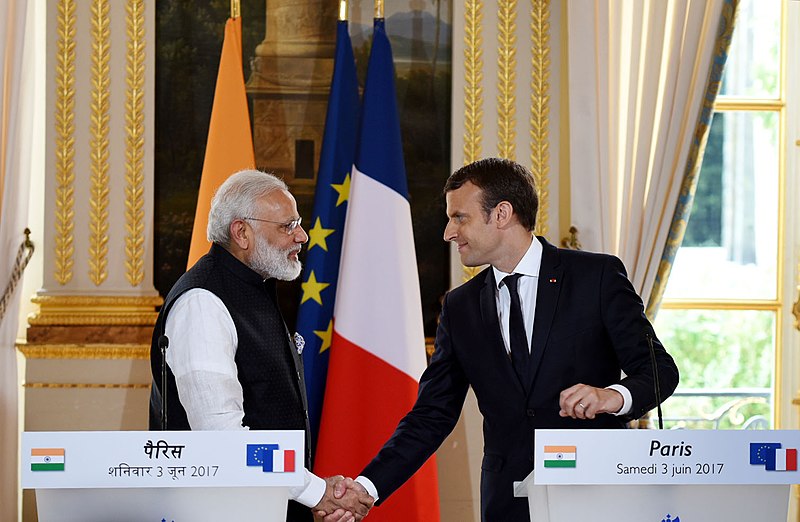
Recent reports of new arms deals with India and Qatar indicate that France's defense industry is rapidly expanding. Meanwhile, Russian arms exports are on the decline following the war in
Ukraine, leading to speculations that France could soon secure the position of the world's second-largest weapons exporter, following the United States.
During this year's Bastille Day military parade on July 14, French President Emmanuel Macron and Indian Prime Minister Narendra Modi came together in a show of unity. Notably, the Indian Tri-Services contingent marched on the Champs-Élysées, while the Indian Air Force showcased French-made Dassault Rafale fighter jets in a fly-past.
This surge in the French arms trade is not surprising to observers in the international defense market. Preceding Bastille Day, New Delhi granted initial approval for an order of six Scorpène submarines and 26 Rafale jets for the Indian Navy. Additionally, Qatar is reportedly considering adding 24 more Rafales to its arsenal, as reported by France's La Tribune.
According to the Stockholm International Peace Research Institute (SIPRI), between 2018 and 2022, France's share of the global arms trade increased to 11 percent, while Russia's declined from 22 to 16 percent. SIPRI's analysis indicates that this trend is set to continue. Pieter Wezeman, author of the SIPRI report, reveals that France has a total of 210 combat aircraft currently on order, compared to Russia's 84, suggesting that France will remain a major arms exporter.
The decrease in Russian arms sales can be attributed to various factors, with the war in Ukraine playing a significant role. Russia has focused on supplying arms to the front lines, holding onto certain systems and replacing weapons destroyed in battle. International sanctions have also impacted Russia's arms production capacity, while reports from the Ukrainian conflict have damaged the reputation of Russia-built armaments.
India, the world's largest arms importer with a long-standing relationship with Russian arms suppliers, has expressed discontent with the technical aspects of Russian products, leading it to turn to France as an alternative supplier. Moreover, geopolitical considerations have influenced arms procurement decisions, with countries facing pressure from the United States to avoid dealing with Russian suppliers.
The French-built Rafale fighter jets have been crucial to France's recent success in the arms trade. The versatile and quality fighter jet has found customers worldwide, including Greece, Qatar, India, and Egypt. Other countries like Croatia, Indonesia, and the United Arab Emirates have also placed orders for Rafales. French company Navel Group's successful military exports, such as defense and intervention frigates, have contributed to France's rise in the global arms race.
Despite these achievements, France has faced challenges in gaining substantial ground in the European arms market. Among NATO member states, there is a preference for the Lockheed Martin F-35 due to its ability to carry US-made nuclear bombs. Nevertheless, Dassault Aviation's stock price has surged since Russia's invasion of Ukraine, suggesting the French arms industry has been benefiting from the geopolitical situation.
While France overtook China as the world's third-largest arms exporter in 2021, whether it will surpass Russia as the second-largest remains uncertain. Countries like South Korea are also experiencing significant growth in the arms trade. However, analysts believe that with the current trajectory, it is a real possibility for France to equal or surpass Russian arms exports by 2024, 2025, or 2026. The ongoing dynamics in the global arms market continue to shape the competition between major arms exporters. Photo by Prime Minister's Office, Wikimedia commons.








































